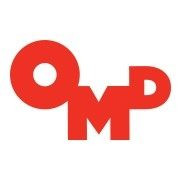This article was originally published in Glossy, Digiday Media by Katie Richards.
Earlier this week, bitcoin and digital currency news site CoinDesk reported luxury group LVMH plans to launch a blockchain in May or June of this year, beginning with just two of the group’s 70 brands: Louis Vuitton and Dior.
While a representative for LVMH stated the group has no comment, a source familiar with the project told CoinDesk that LVMH hired a full team of blockchain experts to work on the project, alongside ConsenSys and Microsoft Azure. The blockchain, code-named AURA, is designed to “provide proof of authenticity of luxury items, and trace their origins from raw materials to point of sale and beyond to used-goods markets. The next phase of the platform will explore protection of creative intellectual property, exclusive offers and events for each brands’ customers, as well as anti-ad fraud.”
Getting into blockchain for a luxury group like LVMH gives the brand a chance to stamp out fake goods in an increasing global counterfeit market — a $450 billion-plus industry as of 2016, per the Organization for Economic Co-operation and Development. Experts believe it could also have major impacts on the luxury resale market.
“It helps LVMH better fight fraud, which is so massively valuable for a brand like Louis Vuitton that is trying to uphold standards, pricing and quality,” said Vic Drabicky, January Digital founder and CEO. “Things that aren’t authentic begin to massively drop in price or disappear, and for those that do have authentic pieces, it allows customers to experience the product in the proper way, which should bring more people into the brand.”
By creating a blockchain, or a decentralized database where users can add information about a product as it makes its way from where the materials are being sourced to the creation of the finished product (like, say, a Louis Vuitton bag), LVMH would be opening a window into the company’s supply chain. The nature of a blockchain would mean that no one can change any information added to the ledger.
said Israel Mirsky, executive director, global technology and emerging platforms at OMD Worldwide. While LVMH would be the first major luxury fashion group to break into blockchain, other luxury segments have already caught on to the trend. The diamond industry, for one, has been active in the world of blockchain in the past few years. Experts believe that by being the first major luxury fashion group in blockchain, LVMH would further cement itself as the leader in the space and force competitors to play catch-up.
“The risk is relatively low,” said Drabicky. “Last year, LVMH reported roughly $53 billion in revenue,so unless this is a billion dollar enterprise, we’re talking about something that is a very low risk monetarily.”
Some initial reports suggest LVMH plans to whitelist the solution so that other luxury brands can use the technology to assess their own supply chains and authenticate the products consumers are purchasing.
Whether that white-labeling is happening by LVMH or it’s actually ConsenSys or JPMorgan, it isn’t quite clear at this point. Should an outside source be responsible for the white-labeling, and not LVMH, Mirsky believes more brands would benefit from the technology. Plus, if competitors start to see real benefits to AURA, and LVMH isn’t directly profiting from it, Mirsky said he thinks it’s increasingly likely that more brands will join the ecosystem.
